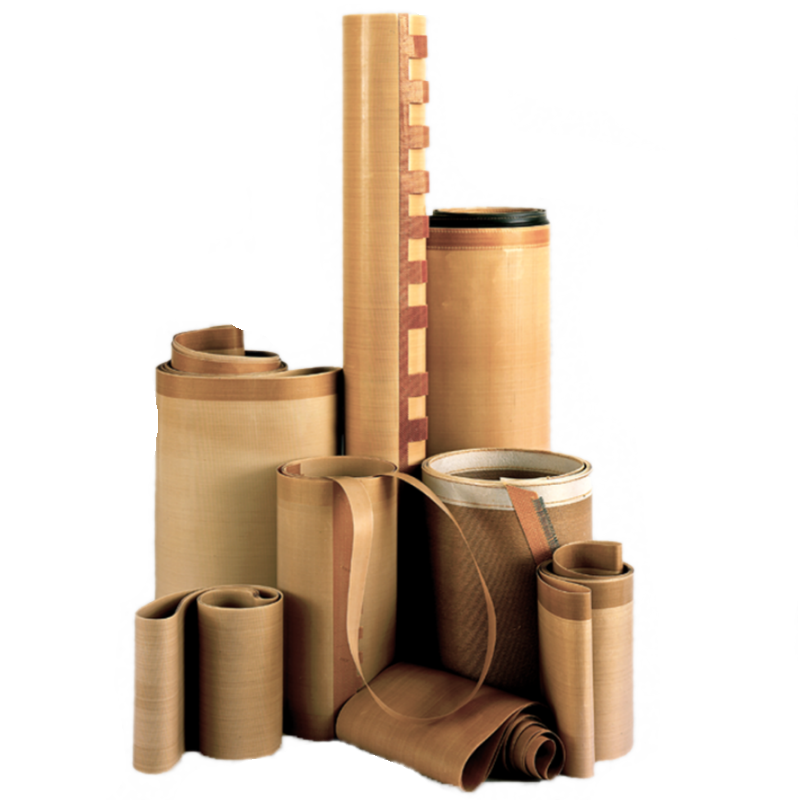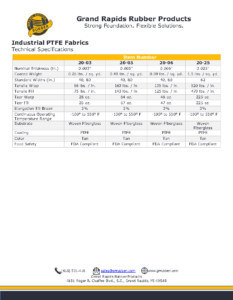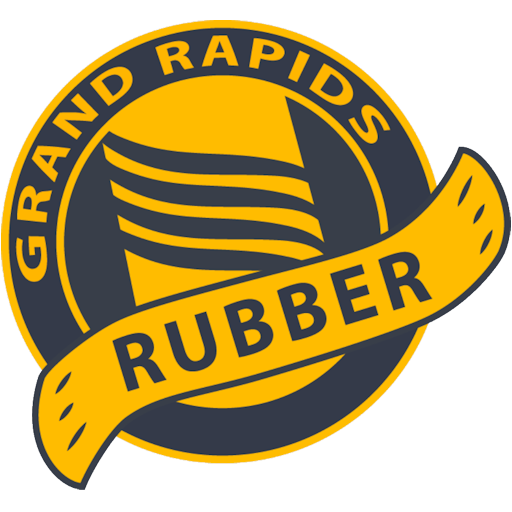INDUSTRIAL PTFE FABRIC

Typical Applications
Packaging
- Poly bag manufacturing
- Impulse/L-Bar sealing
- Form fill and seal
- Over wrapping (Tray packing)
- Side and End sealing
- Blister tray covers
- Vacuum pack machines
Food Products
- Non-stick baking, cooking, and drying
- Food dehydration
- Smoking of meat and fish
- Flash-freezing meat, poultry, and fish
- Oven and microwave liners for home and industrial kitchens
Printing and Textiles
- Heat transfer presses
- Silkscreen table covers
- Fabric lamination
- Garment fusing
Polymer Processing
- Vulcanizing presses
- Rubber curing presses
- Manufacture of filter media
Building Products
-
Manufacture of specialty wood-based
-
Vinyl window manufacturing
Aerospace, Communications & Military
- Composite mold release/bonding
- Vacuum bagging
Chemical Processing
- Tank seals and contaminant barriers.
- Gaskets, membranes, seals & diaphragms
- Corrosion resistant chute, drum, and hopper lines
- Protective curtains and aprons
Other Applications
- Insulation and protection
- Release sheets/separation materials
- Printed circuit board manufacturing
- Wire and cable insulation and protection
- Manufacture of metalized balloons
TECHNICAL DATA

INDUSTRIAL PTFE FABRIC
| GENERAL INFORMATION | |
|---|---|
| Continuous Operating Temperature Range | -100° to 550° F |
| Substrate | Woven Fiberglass |
| Coating | PTFE |
| Color | Tan |
| Food Safety | FDA Compliant |
| Item Number | Nominal Thickness (inches) | Weight (lbs. / sq. yard) | Tensile Fill (lbs. / in.) | Edge Tear Warp (oz.) | Edge Tear Fill (oz.) | Full Widths (inches) |
|---|---|---|---|---|---|---|
| 20-03 | .003 | 0.25 | 32 | 13 | 9 | 40, 80 |
| 20-05 | .005 | 0.46 | 96 | 28 | 25 | 40, 80* |
| 20-06 | .006 | 0.54 | 96 | 28 | 25 | 40, 80* |
| 20-25 | .025 | 1.50 | 472 | 225 | 225 | 62 |
What is PTFE?
Polytetrafluoroethylene (PTFE), a fluorocarbon plastic, is a plastic in which the hydrogen normally found in association with carbon in organic materials has been replaced with fluorine. The resulting polymer possesses a number of unique properties: inertness to chemicals, fire resistance (will not support a frame); excellent weathering resistance; low friction (second only to ice); superior anti-stick properties; flexibility; extreme heat and cold resistance; outstanding electrical, insulative and dielectric properties; and resistance to ultraviolet (UV), infrared (IR), microwave and radio frequency (RF).
Mechanical PTFE Fabrics are manufactured in 4 common thicknesses: 0.003″, 0.005″, 0.009″, 0.010″, and 0.014″
